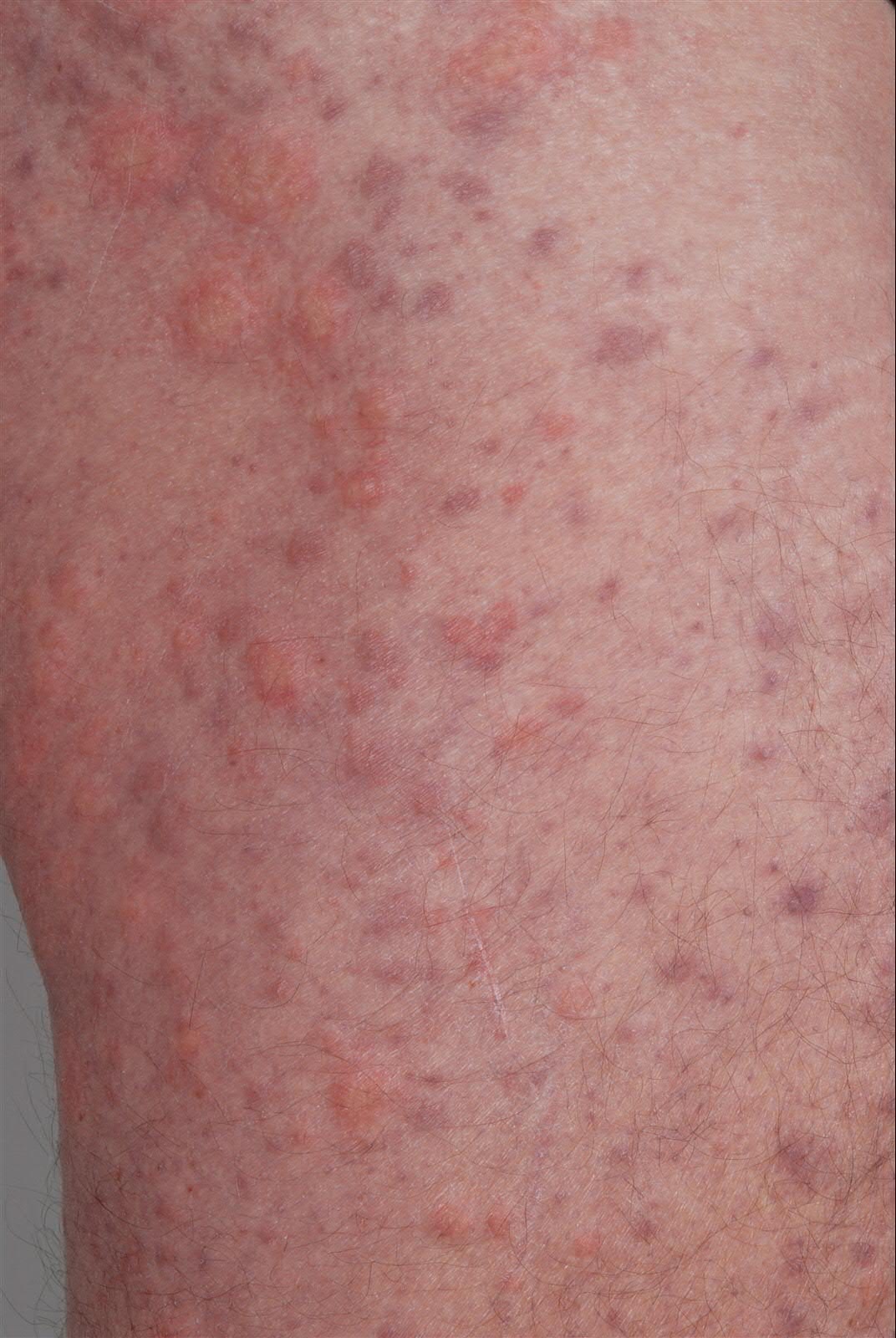What are the symptoms of urticarial vasculitis?
Urticarial vasculitis is a rare condition characterized by inflamed blood vessels in the skin, leading to hives (urticaria) that are often associated with systemic symptoms. The key symptoms include:
- Hives (Urticaria)
- Red, raised, and itchy welts on the skin that resemble typical hives.
- Unlike typical hives, the lesions in urticarial vasculitis usually last longer than 24 hours and can be painful or burn.
- When the lesions resolve, they may leave behind bruising or a darker skin discoloration.
- Pain or Burning Sensation
- The hives can be painful or have a burning sensation, rather than just itching.
- Bruising or Hyperpigmentation
- As the hives heal, they often leave behind bruises or areas of skin darkening.
- Systemic Symptoms (more common in severe cases)
- Joint pain or swelling (arthralgia).
- Fever.
- Abdominal pain.
- Kidney involvement, which can lead to blood in the urine.
- Eye inflammation, leading to redness or discomfort.
- Other Possible Symptoms
- Fatigue.
- Shortness of breath, if the lungs are involved.
- Numbness or tingling, if nerve damage occurs.
These symptoms can vary depending on whether the condition is associated with underlying systemic disease or autoimmune disorders. Urticarial vasculitis is typically diagnosed through clinical evaluation, skin biopsy, and laboratory tests.
What are the causes of urticarial vasculitis?
Urticarial vasculitis is caused by inflammation of the small blood vessels in the skin, leading to hives that are often more persistent than typical urticaria. The underlying causes can vary and include:
- Autoimmune Conditions: Urticarial vasculitis is commonly associated with autoimmune diseases such as lupus, Sjögren’s syndrome, and rheumatoid arthritis, where the body’s immune system attacks its own tissues.
- Infections: Certain viral, bacterial, or parasitic infections can trigger an immune response that leads to urticarial vasculitis.
- Medications: Some medications, like antibiotics (penicillins, sulfonamides), nonsteroidal anti-inflammatory drugs (NSAIDs), and certain diuretics, can cause hypersensitivity reactions that result in urticarial vasculitis.
- Underlying Systemic Diseases: Conditions like hepatitis, systemic lupus erythematosus (SLE), and cryoglobulinemia are linked to urticarial vasculitis.
- Hypersensitivity Reactions: Allergic reactions to foods, insect stings, or other environmental triggers can lead to this condition.
- Idiopathic Causes: In many cases, the exact cause of urticarial vasculitis remains unknown, with no identifiable trigger or underlying disease.
The inflammation in urticarial vasculitis leads to damage in the small blood vessels, resulting in the characteristic skin lesions and sometimes systemic symptoms. Identifying and addressing the underlying cause is key to managing the condition.
What is the treatment for urticarial vasculitis?
The treatment for urticarial vasculitis focuses on managing symptoms and addressing any underlying causes. The approach varies based on the severity of the condition and whether there are systemic symptoms or associated diseases. Here are the common treatment strategies:
- Antihistamines: These are often used as the first line of treatment to relieve itching and reduce hives, especially in mild cases of urticarial vasculitis.
- Nonsteroidal Anti-Inflammatory Drugs (NSAIDs): These can help manage pain and inflammation associated with urticarial vasculitis. However, NSAIDs should be used cautiously as they can worsen symptoms in some cases.
- Corticosteroids: Oral corticosteroids, such as prednisone, are commonly prescribed for moderate to severe cases. They help reduce inflammation and control symptoms but are usually used for short-term management due to potential side effects.
- Immunosuppressive Drugs: In more severe or chronic cases, medications like methotrexate, azathioprine, or mycophenolate mofetil may be used to suppress the immune system and control the disease.
- Hydroxychloroquine: This antimalarial drug is sometimes used to treat urticarial vasculitis, particularly when it’s associated with autoimmune conditions like lupus.
- Biologic Agents: In refractory or severe cases, biologic agents like rituximab or omalizumab may be considered. These target specific pathways in the immune system to control the condition.
- Treatment of Underlying Conditions: If urticarial vasculitis is linked to an underlying condition (e.g., autoimmune disease or infection), treating that condition is essential for managing symptoms.
- Lifestyle and Symptom Management: In addition to medical treatments, managing triggers (like certain medications or foods) and using soothing skin care products can help reduce symptoms.
The treatment plan is usually personalized, depending on the severity of the symptoms, the involvement of other organs, and any associated conditions. Long-term management may require monitoring and adjustments to the treatment strategy.

Leave a Reply
You must be logged in to post a comment.